Kim Jong Un’s leadership has significantly advanced North Korea’s nuclear program‚ focusing on survival and deterrence. His strategy emphasizes nuclear weapons as a cornerstone of national security‚ shaping global geopolitics and regional stability. This article explores his role in accelerating nuclear development‚ key achievements‚ and the international implications of his policies.
Overview of Kim Jong Un and the Bomb
Kim Jong Un has overseen a significant acceleration of North Korea’s nuclear and missile programs‚ solidifying his nation’s status as a nuclear power. His leadership transformed the program‚ achieving key milestones like intercontinental ballistic missile (ICBM) tests and thermonuclear device detonations. The strategy centers on “survival and deterrence‚” ensuring regime security through nuclear capabilities. This approach has drawn global attention‚ shaping international relations and regional security dynamics‚ as documented in Ankit Panda’s detailed analysis in Kim Jong Un and the Bomb.
Significance of the Topic in Global Politics
North Korea’s nuclear ambitions under Kim Jong Un pose a critical challenge to global security and non-proliferation efforts. His regime’s pursuit of nuclear weapons impacts regional stability in East Asia and beyond‚ influencing geopolitical dynamics among major powers like the US‚ China‚ and Russia. The development of ICBMs and thermonuclear devices raises concerns about the global nuclear order‚ making it a focal point in international diplomacy and security strategies. This issue underscores the complexities of modern deterrence and the challenges of achieving denuclearization in the region.
Structure of the Article
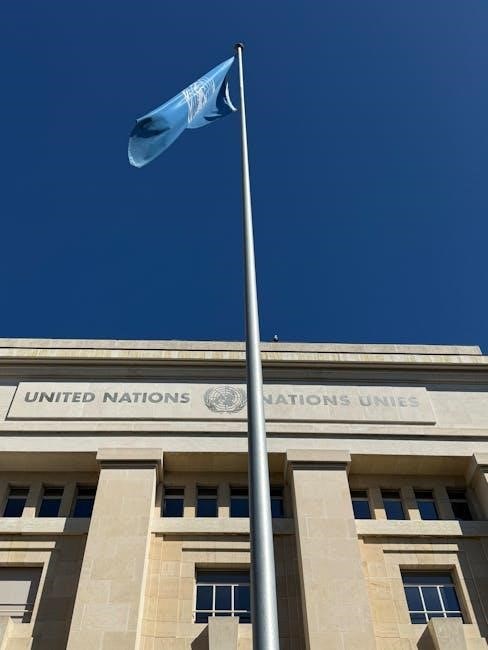
Kim Jong Un’s Early Life and Rise to Power
Kim Jong Un was born in 1982 or 1983‚ the son of Kim Jong Il‚ and rose to power after his father’s death in 2011‚ solidifying control through strategic purges and loyalist appointments.
Kim Jong Un’s Background and Education
Kim Jong Un was born in 1982 or 1983‚ the youngest son of Kim Jong Il. His early life was shrouded in secrecy‚ but he reportedly studied physics at Kim Il Sung University. He also attended school in Switzerland under an alias‚ where he developed a Western perspective. His education and upbringing under his father’s guidance shaped his leadership style. Kim Jong Un’s background influenced his pragmatic approach to governance and military strategy‚ particularly in advancing North Korea’s nuclear capabilities.
Succession and Consolidation of Power
Kim Jong Un assumed leadership after his father‚ Kim Jong Il‚ died in 2011. Despite initial doubts about his readiness‚ he swiftly consolidated power‚ purging potential rivals and establishing himself as the Supreme Leader. He leveraged the military and party loyalists to secure his position. Kim Jong Un also embraced a “byungjin” policy‚ balancing nuclear development and economic growth. His consolidation involved centralizing authority and promoting loyalists‚ ensuring stability and control over North Korea’s political and military apparatus.
Initial Policies and Military Focus
Upon assuming power‚ Kim Jong Un prioritized military strength and nuclear development. He adopted the “byungjin” policy‚ aiming to advance both economic growth and nuclear capabilities. The regime conducted numerous missile tests‚ showcasing progress in military technology. Kim emphasized self-reliance and modernization of the armed forces. His leadership saw the development of intercontinental ballistic missiles‚ such as the Hwasong-14 and Hwasong-15‚ demonstrating a focus on deterrence. These actions highlighted the regime’s commitment to military advancement‚ solidifying its strategic priorities under Kim’s rule.

North Korea’s Nuclear Program Before Kim Jong Un
North Korea’s nuclear ambitions began under Kim Il Sung‚ with Soviet aid. The program advanced under Kim Jong Il‚ with plutonium production and missile tests‚ laying the groundwork for future developments.
Historical Context of North Korea’s Nuclear Ambitions
North Korea’s nuclear ambitions trace back to the Cold War era‚ driven by security concerns and geopolitical tensions. Following the Korean War‚ North Korea sought to bolster its defense against perceived threats from South Korea and the U.S. The program gained momentum under Kim Il Sung‚ leveraging assistance from the Soviet Union and China. National pride and the Kim regime’s desire for global recognition also fueled the pursuit. Despite economic challenges and international opposition‚ North Korea persisted‚ viewing nuclear weapons as essential for sovereignty and deterrence.
Key Milestones in Nuclear Development
North Korea’s nuclear program reached critical milestones under Kim Jong Un. In 2013‚ it conducted its third nuclear test‚ defying UN resolutions. By 2016‚ it claimed to have miniaturized nuclear warheads. In 2017‚ successful tests of the Hwasong-14 and Hwasong-15 ICBMs demonstrated potential U.S. mainland reach. These advancements solidified North Korea’s status as a nuclear state‚ despite intensified sanctions and global condemnation. These achievements underscored Kim Jong Un’s commitment to nuclear deterrence and self-reliance.
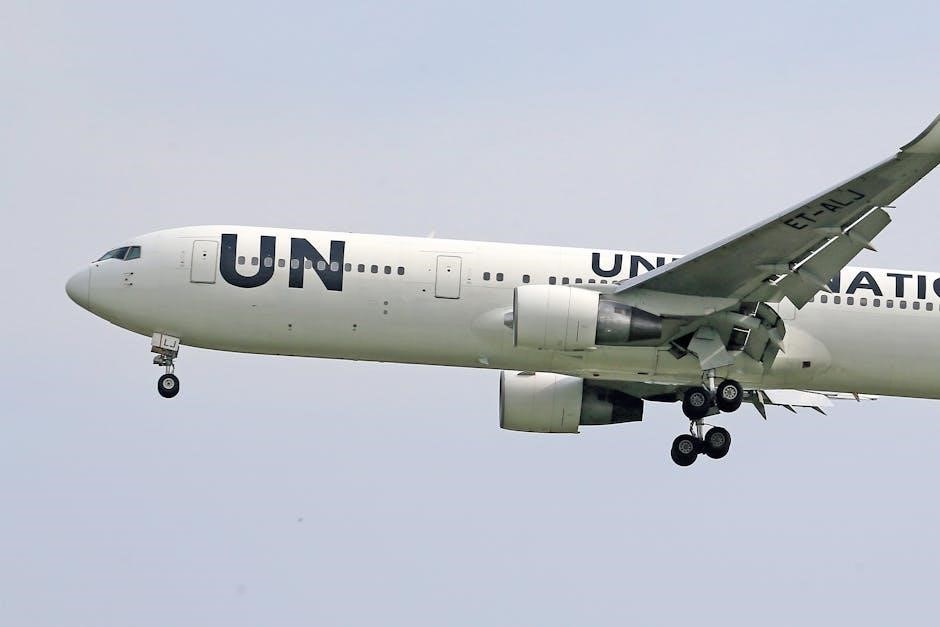
International Reactions to North Korea’s Nuclear Program
The international community has strongly condemned North Korea’s nuclear ambitions‚ with the UN Security Council imposing numerous sanctions. The U.S.‚ South Korea‚ and Japan have led calls for denuclearization‚ while China and Russia advocate for dialogue. The IAEA has repeatedly expressed concern over North Korea’s non-compliance with nuclear safeguards. Regional tensions have escalated‚ with military drills and rhetoric intensifying. Global powers remain divided on how to address the issue‚ balancing punitive measures with diplomatic engagement to prevent further proliferation and instability in East Asia.
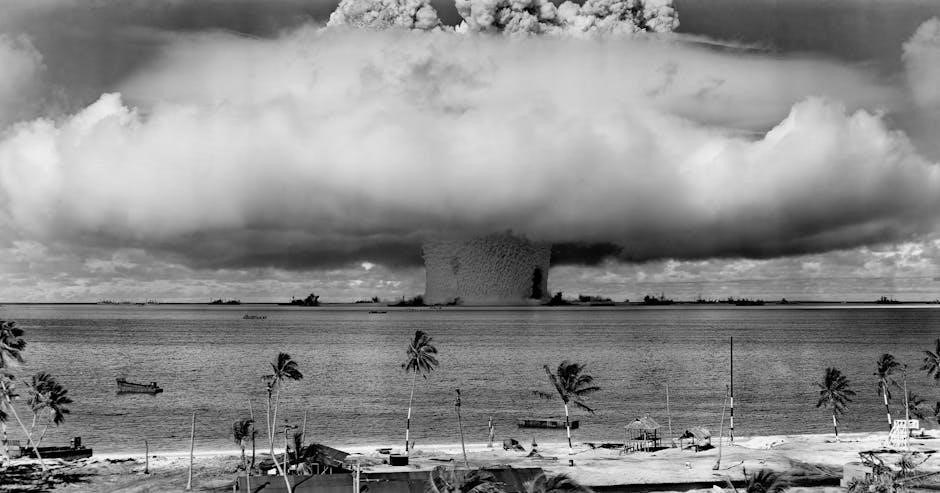
Nuclear Development Under Kim Jong Un
Kim Jong Un accelerated North Korea’s nuclear and missile tests‚ showcasing advancements in technology and strategic capabilities‚ solidifying the regime’s deterrence and negotiation leverage.
Acceleration of Nuclear and Missile Tests
Under Kim Jong Un‚ North Korea significantly escalated nuclear and missile tests‚ demonstrating rapid technological advancements. The regime conducted multiple ICBM launches‚ including the Hwasong-14 and Hwasong-15‚ showcasing potential global reach. Nuclear tests‚ such as the 2017 hydrogen bomb test‚ highlighted enhanced explosive yields. These actions underscored Kim’s commitment to building a robust deterrent‚ drawing international condemnation and tightening sanctions. The accelerated pace reflected a strategic push to achieve nuclear parity and bolster bargaining power in diplomatic engagements.
Key Achievements in Nuclear Capabilities
Under Kim Jong Un‚ North Korea achieved significant milestones in nuclear capabilities. The regime successfully miniaturized nuclear warheads‚ enabling their deployment on ballistic missiles. Advances in missile guidance systems improved accuracy‚ and the development of submarine-launched missiles expanded strategic options. Nuclear tests demonstrated increased explosive yields‚ showcasing technological progress. Solid-fuel missile technology was also refined‚ enhancing reliability and launch readiness; These achievements solidified North Korea’s claim to a credible nuclear deterrent‚ bolstering its negotiating position on the global stage.
Impact of Sanctions on Nuclear Development
Sanctions imposed on North Korea have had a dual impact on its nuclear development. While they aimed to curb progress by limiting resources and technology‚ they also spurred North Korea to enhance its self-reliance. The regime adapted by developing indigenous technologies and diversifying its supply chains. Despite economic hardships‚ North Korea continued nuclear advancements‚ showcasing resilience. Sanctions have not halted the program but may have slowed certain projects. Their effectiveness remains debated‚ as they have not achieved denuclearization‚ potentially pushing North Korea to rely more on its nuclear deterrent for security.

Kim Jong Un’s Nuclear Doctrine
Kim Jong Un’s nuclear doctrine emphasizes “survival and deterrence‚” using nuclear weapons as a cornerstone of security strategy to ensure regime survival and sovereignty.
The Concept of “Survival and Deterrence”
Kim Jong Un’s nuclear doctrine revolves around “survival and deterrence‚” prioritizing the regime’s survival and sovereignty. This strategy aims to prevent foreign interference by deterring adversaries through nuclear capabilities‚ ensuring North Korea’s security in a hostile geopolitical landscape. Unlike other nuclear powers‚ Pyongyang’s doctrine emphasizes regime survival as its primary goal‚ with nuclear weapons serving as both a shield and a tool for international bargaining power. This approach reflects North Korea’s unique vulnerabilities and its perception of existential threats from external powers.
Nuclear Weapons as a Cornerstone of Security Strategy
Nuclear weapons form the bedrock of Kim Jong Un’s security strategy‚ designed to safeguard the regime’s existence and territorial integrity. They serve as a deterrent against external threats‚ particularly from the United States and its allies. By possessing a nuclear arsenal‚ North Korea aims to offset its conventional military limitations and ensure strategic parity. This approach reflects a shift from earlier policies‚ where nuclear capabilities were often leveraged for diplomatic bargaining. Under Kim Jong Un‚ nuclear weapons have become an indispensable component of national security‚ central to maintaining the regime’s long-term viability and geopolitical influence.
Public Statements on Nuclear Policy
Kim Jong Un has consistently emphasized the importance of nuclear weapons in public statements‚ framing them as essential for national sovereignty and security. He has repeatedly stated that North Korea’s nuclear capabilities are non-negotiable‚ asserting that they serve as a deterrent against foreign aggression. In speeches and state media‚ Kim has highlighted the success of nuclear tests and missile launches‚ portraying them as achievements that bolster the nation’s strength and international standing. His rhetoric underscores the regime’s commitment to maintaining a nuclear arsenal as a cornerstone of its defense strategy.
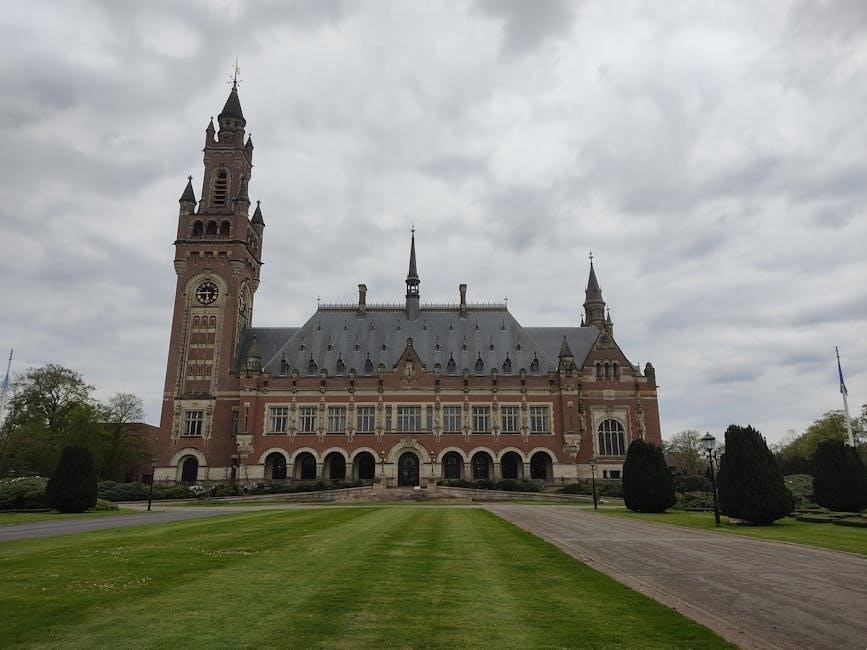
International Relations and Diplomacy
Kim Jong Un’s diplomatic efforts have centered on high-profile summits‚ shaping North Korea’s global image while addressing nuclear concerns and regional security dynamics.
Summits with Donald Trump and Their Outcomes
The historic summits between Kim Jong Un and Donald Trump marked unprecedented direct diplomacy between North Korea and the United States. The first summit in Singapore (2018) focused on denuclearization and establishing a new relationship‚ resulting in a joint statement. The second summit in Hanoi (2019) aimed to discuss concrete steps but ended without an agreement due to disagreements over sanctions relief and denuclearization measures. These meetings represented a shift towards direct engagement but failed to achieve significant progress‚ underscoring the complexities of resolving the nuclear issue.
Relations with South Korea and China
Kim Jong Un’s relations with South Korea and China have been complex and influential in shaping North Korea’s nuclear stance. South Korea has historically sought dialogue‚ with moments of cooperation like the 2018 Panmunjom Declaration. However‚ progress has been inconsistent due to North Korea’s continued nuclear development. China‚ as North Korea’s primary ally and economic supporter‚ has played a crucial role in mediating tensions. Despite international pressure‚ China’s strategic interests often align with maintaining stability in North Korea‚ impacting its stance on denuclearization efforts.
Kim Jong Un’s Openness to Dialogue
Kim Jong Un has demonstrated varying degrees of openness to dialogue‚ particularly with the U.S. and South Korea. His summits with Donald Trump marked a rare willingness to engage directly with Western leaders‚ though tangible outcomes were limited. Similarly‚ interactions with South Korea‚ such as the 2018 DMZ meeting‚ suggested a readiness for diplomacy. However‚ his commitment to dialogue is often overshadowed by North Korea’s continued nuclear development‚ raising questions about the sincerity of his engagement and the ultimate goals of his diplomatic overtures.

The Bomb: Technical and Strategic Details
North Korea’s nuclear program under Kim Jong Un has advanced significantly‚ with enhanced missile capabilities and miniaturization efforts‚ solidifying its strategic deterrent against regional and global adversaries.
North Korea’s Nuclear Arsenal Overview
North Korea’s nuclear arsenal‚ under Kim Jong Un‚ includes a growing number of warheads‚ with estimates suggesting between 20 to 50 devices. These range from basic fission bombs to potentially more advanced thermonuclear designs. Delivery systems include intercontinental ballistic missiles (ICBMs) like the Hwasong-14 and Hwasong-15‚ capable of reaching the United States. Intermediate-range missiles‚ such as the Hwasong-12‚ also bolster regional deterrence. Recent advancements in solid-fuel technology and multiple independently targetable reentry vehicles (MIRVs) highlight strategic sophistication. Despite progress‚ international assessments question the reliability and full operational status of these weapons‚ underscoring ongoing technical challenges.
Ballistic Missile Program Developments
Under Kim Jong Un‚ North Korea has significantly advanced its ballistic missile program‚ showcasing enhanced range and accuracy. The Hwasong-17 ICBM‚ unveiled in 2022‚ demonstrates capability to strike the U.S. mainland. Solid-fuel missile technology‚ as seen in the Hwasong-23‚ improves readiness and survivability; Tests of multiple launches and new systems like the KN-23 and KN-25 highlight modernization efforts. These developments underscore North Korea’s focus on deterring adversaries and strengthening its strategic deterrent‚ despite international condemnation and sanctions.
Threat Perceptions and Strategic Implications
North Korea’s nuclear and missile advancements under Kim Jong Un have heightened regional and global security concerns. The regime’s capabilities pose a direct threat to South Korea‚ Japan‚ and U.S. interests in Asia. Strategically‚ this expansion challenges the balance of power in East Asia and complicates non-proliferation efforts. The international community views North Korea’s nuclear arsenal as a destabilizing force‚ prompting increased military cooperation among adversaries and reinforcing the need for diplomatic solutions to mitigate the growing threat landscape.
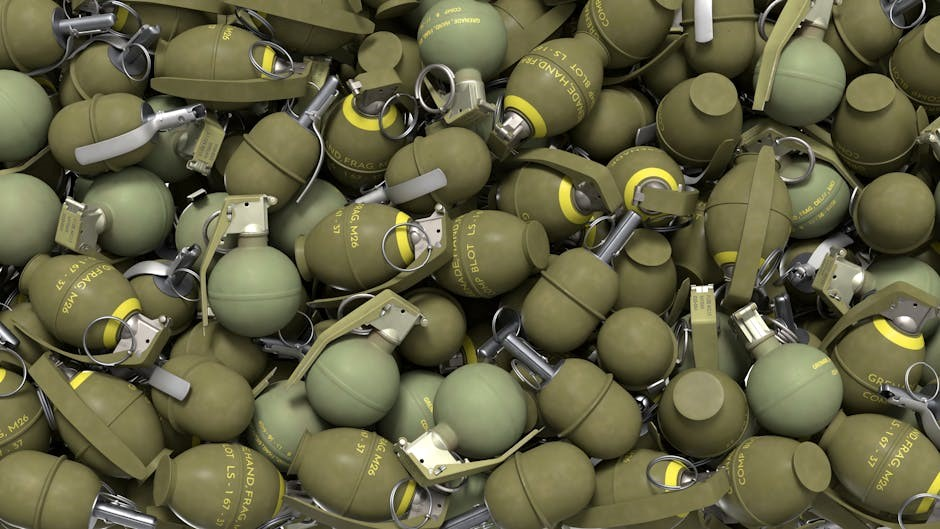
Global Responses and Implications
Kim Jong Un’s nuclear pursuits have sparked global alarm‚ prompting UN sanctions and heightened military cooperation among regional allies‚ while dividing opinions on diplomatic engagement strategies.
UN Sanctions and Their Effects
UN sanctions imposed on North Korea aim to curb its nuclear ambitions by targeting key sectors like coal‚ iron‚ and seafood exports. These measures have severely impacted the economy‚ restricting access to foreign currency and essential goods. However‚ the regime has shown resilience‚ relying on clandestine trade and domestic production. Sanctions have also heightened humanitarian concerns‚ as ordinary citizens face food and medicine shortages. Despite their economic bite‚ sanctions have failed to halt Kim Jong Un’s nuclear program‚ raising questions about their long-term effectiveness in achieving denuclearization.
Regional Security Concerns
North Korea’s nuclear advancements have heightened regional security concerns‚ particularly for South Korea‚ Japan‚ and the broader Asia-Pacific. The regime’s missile tests and nuclear capabilities pose a direct threat to neighboring nations‚ prompting increased military collaboration among allies. The presence of U.S. military bases in South Korea and Japan further complicates the geopolitical landscape‚ as any miscalculation could escalate tensions. Additionally‚ the ongoing strategic competition between the U.S.‚ China‚ and Russia in the region exacerbates instability‚ raising fears of proliferation and regional conflict. This has led to calls for stronger alliances and defense systems to counter the growing threat.
Future Prospects for Denuclearization
The future of denuclearization remains uncertain‚ with North Korea showing little willingness to abandon its nuclear arsenal. While diplomatic efforts continue‚ the lack of trust and divergent demands from Pyongyang and the international community pose significant hurdles. Sanctions relief and security guarantees are key factors that could influence Kim Jong Un’s calculus. However‚ without meaningful concessions‚ the prospects for denuclearization appear dim‚ leaving the region in a state of heightened tension and uncertainty.

Domestic Implications
North Korea’s nuclear program strains resources‚ impacting economic development and public welfare. Internal political stability is maintained through propaganda‚ but long-term societal costs remain significant.
Economic Impact of Nuclear Ambitions
North Korea’s nuclear program has severely strained its economy‚ diverting resources from essential sectors like agriculture and healthcare. International sanctions‚ imposed in response to nuclear tests‚ have further isolated the economy‚ limiting trade and foreign investment. This has exacerbated food shortages‚ increased poverty‚ and widened inequality. The regime’s prioritization of military spending over economic development has hindered infrastructure growth and social services‚ fostering long-term economic stagnation and reliance on black-market activities to survive sanctions.
Public Perception and Propaganda
Kim Jong Un’s nuclear ambitions are portrayed in state propaganda as a symbol of national strength and sovereignty. The regime uses media to cultivate public support‚ framing nuclear weapons as essential for survival against external threats. Citizens are often shown celebrating missile launches‚ reinforcing a narrative of pride and resilience. While internal dissent is hidden‚ propaganda emphasizes unity behind Kim’s leadership‚ blending patriotism with the nuclear program’s perceived success. This narrative helps maintain domestic legitimacy for the regime’s costly and controversial policies.
Military Modernization Efforts
Under Kim Jong Un‚ North Korea has prioritized modernizing its military‚ with a focus on enhancing nuclear delivery systems and conventional forces. The regime has invested in advanced missile technologies‚ including hypersonic missiles and improved guidance systems. Cyber warfare capabilities have also been strengthened to disrupt adversaries’ military networks. Domestic production of weapons‚ such as submarines and long-range artillery‚ has been emphasized to reduce reliance on imports. These efforts aim to bolster deterrence and ensure the regime’s survival‚ aligning with Kim’s broader security strategy.
Kim Jong Un’s leadership has significantly shaped North Korea’s nuclear strategy‚ posing complex challenges for global security and stability‚ with profound implications for international relations.
Kim Jong Un’s leadership has been marked by significant advancements in North Korea’s nuclear and missile capabilities‚ solidifying its status as a nuclear state. His doctrine of “survival and deterrence” has driven the acceleration of weapons testing‚ despite international sanctions and diplomatic pressure. The regime’s nuclear program has become a cornerstone of its security strategy‚ ensuring regime stability while escalating regional tensions. The international community‚ particularly the U.S.‚ South Korea‚ and China‚ has responded with mixed diplomacy‚ reflecting the complexity of addressing this growing threat to global security and stability.
Future Outlook for North Korea’s Nuclear Program
North Korea’s nuclear program is likely to continue advancing‚ with Kim Jong Un prioritizing modernization and expansion of its arsenal. The regime may pursue enhanced missile capabilities and miniaturization of nuclear warheads. International sanctions and diplomatic efforts could shape the program’s trajectory‚ but denuclearization remains unlikely without significant security guarantees. The program’s future may also depend on regional dynamics‚ particularly relations with China and the U.S.‚ influencing whether Pyongyang maintains its nuclear deterrent or explores new strategic options amid global geopolitical shifts.
Final Thoughts on Kim Jong Un’s Strategy
Kim Jong Un’s strategy revolves around consolidating power and ensuring regime survival through nuclear deterrence. His regime has prioritized nuclear modernization and missile advancements to counter external threats. Despite diplomatic overtures‚ Pyongyang remains committed to its nuclear arsenal as a cornerstone of national security. Domestically‚ propaganda reinforces the leader’s image as a strong‚ visionary figure. Internationally‚ North Korea’s nuclear program poses significant challenges for global stability and non-proliferation efforts‚ making it a critical issue for future geopolitical engagement and conflict resolution.
